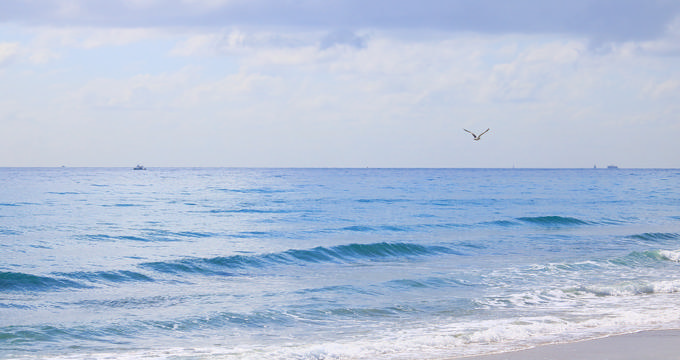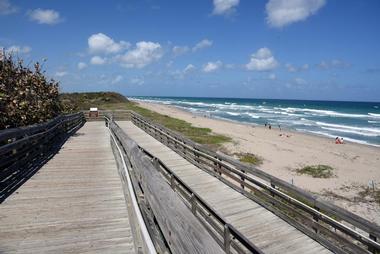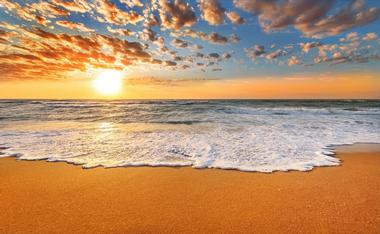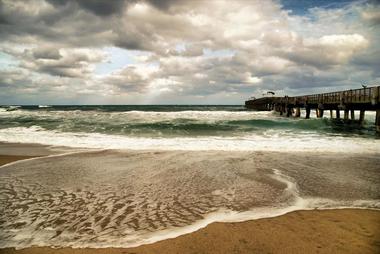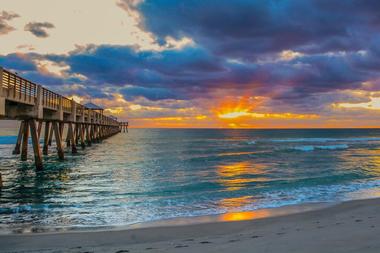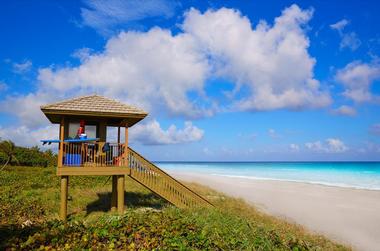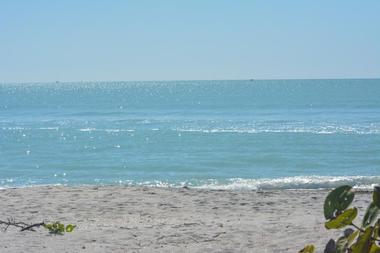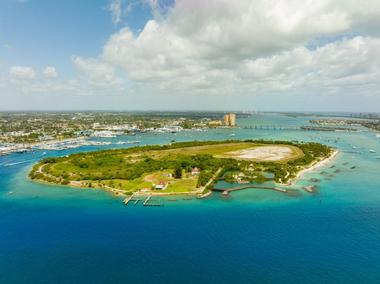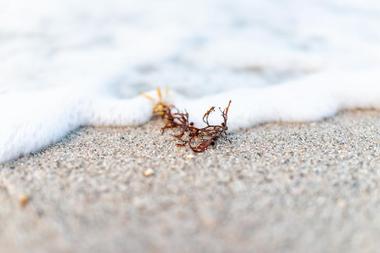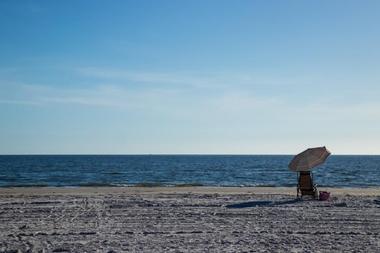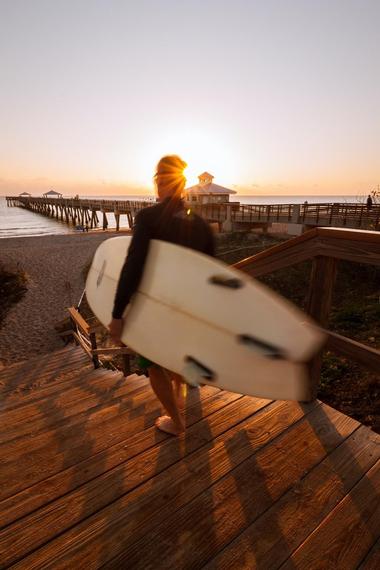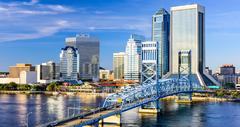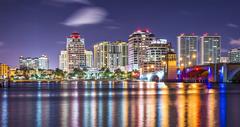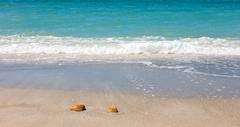West Palm Beach has a lot of breathtaking public beaches to choose from, attracting large crowds of locals and tourists all through the year. Some of the beaches around West Palm Beach are relatively simple and untouched, while others come complete with useful amenities and extra features like playgrounds and parks. If you're planning a beach trip in West Palm Beach and the surrounding area, here are some details and overviews of the very best locations to choose from.
What are the 10 Best West Palm Beach Beaches?
The 10 Best West Palm Beach Beaches according to local experts are:
- John D. Macarthur Beach State Park
- Palm Beach
- Lake Worth Beach
- Juno Beach
- Delray Beach
- West Palm Beach Beaches: Carlin Park
- Romantic Beaches Near Me: Peanut Island
- Ocean Reef Park
- West Palm Beach Beaches: Oceanfront Park
- More Info
More Ideas: Palm Beach Zoo
Spanning 23 acres in West Palm Beach, the Palm Beach Zoo and Conservation Society is a popular attraction in the South Florida area. What began as a small petting zoo now houses over 700 animals, representing a wide variety of species.
Fully accredited by the Association of Zoos and Aquariums (AZA), the zoo also houses a 10,000 square foot animal care facility, which is the center of the zoo’s conservation efforts. Visitors can learn about the animals of the zoo, not only from the exhibits and care facility, but also through interactive shows and events held throughout the park.
The Zoo’s origins date back to the 1950s, when Parks Director Paul Dreher opened a botanical garden. Then known as Bacon Park, the attraction included a small petting zoo with a few farm animals. Over the years, the petting zoo became popular, and as it did, the Park began acquiring more animals. By 1970, the Zoo, as it became known, began charging admission, and expanded to its current 23 acre space. In the early 1980s, the Zoo ventured into the education arena, establishing programs, field-trips, classes and workshops for students, children and animal enthusiasts.
Now comprised of more than 2,400 programs, the education division helps the Zoo to fulfill its mission to inspire others to protect the natural world. Following a $30 million gift from board members Harriett and George Cornell, one of the largest single contributions to a Zoo in America, the Palm Beach Zoo began an ambitious expansion and renovation program. The development included significant habitat expansion and creation for a number of the Zoo’s most popular animals. This massive project has created significant improvements which are now enjoyed by the more than 300,000 visitors the Zoo receives each year.
The Palm Beach Zoo boasts many animal habitats, enclosures and exhibits for visitors to explore. Some of the highlights of its extensive animal roster include capybaras, monkeys, bats, anteaters and tropical birds. The jaguar exhibit, created during the 2003 redevelopment, is renowned as one of the best in the country. Interactive exhibits with the Zoo’s avian life showcase tropical, migratory and other birds, both large and small, in the show Wings over Water.
Other daily shows include the Wild Things Show, during which keepers and trainers educate audiences about various animals, in the Wildlife Theater. In addition to these shows, Daily Animal Enrichments, which take place throughout the park, feature keeper talks with a variety of animals, from tigers, to alligators to various primates. With furry friends to scaly scoundrels and winged wonders, the Palm Beach Zoo has many animals to educated, enlighten, and entertain.
Programs and Events
For children and families, the Zoo offers full day and part day camps for several weeks in the summer, available to children aged five to fourteen. These courses include crafts, games, rides, animal encounters, conservation activities and behind-the-scenes tours. Other special programs include family overnights, including snacks and activities, as well as Children’s Workshops.
Crafts and activities undertaken at the workshops target children aged two to four and are designed to peak interest in animals. The Zoo also offers a variety of events throughout the year. These can include Story Time for the kids, Food Truck Safaris or Roar & Pour for the adults, and Safari Nights for the whole family, with food, music, entertainment, and themed activities and education.
Education
Featuring a robust array of educational programs and opportunities, the Zoo works to ensure its facilities not only provide ample amusement but also knowledge for all who visit. Offering a wide variety of educational opportunities, from classes and guided tours to distance learning and the Wildlife Conservation Academy, there is much to choose from in the educational arena.
Teachers and schools can take advantage of zoo visits, class overnights, and zoo school, an innovative learning experience for third to fifth graders in an outdoor classroom. Scouts and community groups take advantage of similar educational offerings. It’s not all for kids, though, with opportunities for teenagers and adults as well. The Wildlife Conservation Academy specifically targets learning, and hands on career informing activities for students aged 15-17, creating a memorable experience for participants.
Sponsoring projects all over the world, The Palm Beach Zoo and Conservation Society is working to live up to its name. These include conservation of the Greater Madidi Tambopata Landscape in Boliva, one of the most biologically diverse places on Earth, and Tiger Conservation in the Endau-Rompin Landscape in Malaysia.
Their projects closer to home include research on the Palm Beach County Reef, an artificial reef program providing many benefits to the marine life in the area; the reintroduction program of the Perdido Key beach Mouse; as well as the Florida Wildlife Corridor, bringing awareness and funding to this special project protecting in the natural habitats of the Florida wetlands. On site programs at the Zoo include the Native Wildlife Rehabilitation Program, Nutritional Studies in Multiple Species, Avian Influenza Testing and Surveillance, and Goeldi’s Monkey Contraception Study. In addition, the Palm Beach Zoo is also engaged in the creation of Species Survival Plans for dozens of animals.
With shops, restaurants, interactive adventures, a carousel and even a large fountain to play in on hot Florida afternoons, the Palm Beach Zoo provides a full day of activities. As the zoo also offers periodic animal experiences, daily shows and special events, visitors are advised to check the Zoo’s website for times prior to planning a trip. Easily accessible from major freeways and located in the downtown area, the Zoo is easily incorporated into a Palm Beach vacation.
1301 Summit Boulevard, West Palm Beach, Florida 33405-3035, Phone: 561-547-9453
You are reading "10 Best West Palm Beach Beaches " Back to Top
More Ideas: McCarthy’s Wildlife Sanctuary
McCarthy's Wildlife Sanctuary in West Palm Beach proudly boasts its reputation as a non-profit wildlife rehabilitation program accredited by Florid Fish and Wildlife Conservation Commission, US Fish and Wildlife Service: Department of Interior, and the US Department of Agriculture's Animal Welfare Act. Thousands of wounded and sick animals have received treatment at the Sanctuary with the support of donors and volunteers.
About the Sanctuary
Hundreds of animals from foxes and bobcats to pelicans, owls, and hawks have been treated at McCarthy’s Wildlife Sanctuary. Many of the more exotic animals treated were given to the Sanctuary by wildlife officers who seized them from their prior owners due to neglect, illegal ownership, and mistreatment. Some of the animals were even brought to the sanctuary by their owners because of their inability to care for them.
There are over one hundred and seventy animals that call the Sanctuary their permanent home. The cost of keeping these animals is astronomical. All funding for the McCarthy Wildlife Sanctuary comes from donations made by the community. As repayment for the donations, the Sanctuary provides the community interesting and informative education program.
Mark McCarthy is the Sanctuary’s director and has been professionally working with animals since 1972. The McCarthy Wildlife Sanctuary was established in Palm Beach, FL in 1990. It extends across five acres near West Palm Beach. The center has provided over six thousand programs, teaching over five-hundred thousand students over the last sixteen years near South Florida. More than four thousand wounded animals have received treatment at the Sanctuary.
Rehabilitation and Rescue
The rehabilitation center at the Wildlife Sanctuary has expanded greatly. It now includes a clinic and a recovery room for animals treated at the center. The raptor center within the preserve has been expanded and finished. It is home to permanently damaged raptors that will live out the rest of their lives at the Sanctuary.
McCarthy Wildlife Sanctuary rescues animals from all sorts of different situations. Birds and squirrels are brought to the preserve when they have fallen out of their nests or after storms have destroyed them. In more serious situations, animals that have been hit by vehicles are brought to rehabilitation center. A determination is made to as to whether the animal will recover and be able to be released back into the wild or whether it’s injuries are too severe, and it must be euthanized. Exotic animals wind up at the shelter when owners are unable to properly care for them, they are mistreated and seized by the law, or the owners don’t have to proper permits to keep them. McCarthy Wildlife Sanctuary offers a home to retired animal actors who are no longer acting.
Exploring the Sanctuary
Visitors wishing to see the preserve, must call to set up a tour. During the tour, staff will remove several of the smaller animals from their enclosures for visitors to interact with. Some of these animals may include an alligator, a tortoise, a kinkajou, a parrot, a tarantula, and an assortment of snakes.
Educational Opportunities
As repayment to the community of Palm Beach Florida for their generous donations to McCarthy’s Wildlife Sanctuary, the preserve offers a several educational opportunities.
Wildlife Outreach Program
McCarthy’s Wildlife Sanctuary developed an outreach program where they take the animals to the surrounding schools for educational purposes. There are nine animals involved in this program, and each is taken at a different time for students to learn about.
Some of the animals are:
· Scarlet Macaw
· American Alligators
· Barred Owl
· Siberian Lynx
· Rose-Hair Tarantula
· Kinkajou
· Gila Monster
· Albino Burmese Python
· Ringtail Lemur
The program is catered and taught based on the grade level of the students participating. Once the lesson is over students are given the opportunity to help the preserve staff handle the animals. Each lesson lasts about an hour.
Volunteer
While McCarthy’s Wildlife Sanctuary does not offer any internship opportunities, those interested in wildlife and rehabilitation efforts can volunteer. Each volunteer works a few hours two days a week. Their tasks include raking and ground maintenance, preparing food, and cleaning bird cages among other tasks.
Donations
Those interested in what they can do to help McCarthy’s Wildlife Sanctuary can make monetary donations or material donations. Those wishing to make material donations should provide items such as trash bags, lightbulbs, animal crates, parrot feed, and fruits and vegetables.
Concessions
The preserve doesn’t offer a concession stand, but bottles of water can be bought at the gate for a dollar and the gift shop sells chips and soft drinks.
Shopping
The gift shop can be visited at the end of the guided tour.
12943 61st St. North, West Palm Beach, FL 33412, Phone: 561-790-2116
More Things to Do in West Palm Beach
More Ideas: Mounts
Mounts: Botanical Garden of Palm Beach County is located in West Palm Beach, Florida. The site was first used in 1954, not for a garden, but as a pasture for horses. The land wasn’t turned into some resemblance of the gardens you see today until 1980, at which time Clayton Hutcheson had a large part in its creation. The garden was officially named what it is today in 1986, in honor of Marvin U. Mounts.
In the Butterfly Garden, visitors can not only see around 12 different kinds of butterflies, but also the types of plants the butterflies use as food sources. What may look like weeds to us, are actually plants grown specifically for the butterflies and are the butterflies’ favorited food sources. A few of such weeds are the Tassel-flower, Beggar’s Tick, and Mistflower. There are also a variety of nectar plants around the garden, such as Tropical Sage, Firebush, Coral Honeysuckle, Mexican Petunia, Tampa Verbena, and Dune Sunflower.
Visitors to Mounts can find shade in the Tropical Forest. This shaded tropical garden provides a cooler area to explore, with the temperature sometimes being up to ten degrees less than gardens in the sun nearby. The lower temperatures are created by the dense foliage of bromeliads, ferns, orchids, and other tropical plants in a collection of different colors, textures, and sizes. The eye is naturally drawn upwards while exploring this garden, with spots of color working their way from the garden floor to the treetops.
The Mediterranean Garden features Mediterranean plants and those that can be used as substitutes that can survive in the area’s subtropical climate. With a large amount of architecture throughout Palm Beach County being of the Neo-Mediterranean style, a garden or landscape that matches if often desired. Unfortunately, much of plants from the Mediterranean do not survive in a subtropical climate. This garden demonstrates how visitors can have create a Mediterranean style garden that can survive the climate.
You are reading "10 Best West Palm Beach Beaches " Back to Top
Visitors to the Rainbow Garden are greeted with a wide array of colors arranged by hue. The color spectrum is made possible by an extensive assortment of flowers and foliage. The plants in this garden demonstrate the variety of color of plants that grow well in the area.
Plants showcased in the Garden of Extremes grow best in extreme environments. The plants or materials here are typically unique to variety of extremes, such as a very low amount of moisture in soil, strong drying winds, and large amounts of light. These extreme conditions are often necessary for the plants to survive and thrive. Extreme conditions occur in Palm Beach County, albeit more so near the coast. The Garden of Extremes showcases plants that are able to grow well with a small amount of water, many can go weeks without being watered. Much of the collection of plants in this garden consists of cacti, conifers, and fleshy leaved plants. Most plants that thrive in extreme conditions need soil that is well drained.
The Tropical Foliage Border is also called the Gentlemen of the Garden/Eigelberger Border due to the Gentlemen of the Garden providing funds for the garden and being created by Bob Eigelberger in 2005. While many other landscapes are more formal in structure, the Tropical Foliage Border consists of two subtle curves. The dense assortment of bromeliads, ferns, begonias, succulents, and additional non-woody tropical plants gives the border a colorful display throughout the year.
The plants in the Edible Landscape are plants that you can eat, or at least parts of them, and are arranged in a fashion similar to that of a French Kitchen Garden. The variety of edible plants includes edible flowers, vegetables, tropical fruit trees, and herbs. One main feature of the garden is dooryard fruit trees. Dooryard trees are trees that are maintained to a small size to enable easier harvesting and care, as well to fit in smaller spaces. There has been an increase in visitors due in part to the “grow your own” trend.
The Florida Native Garden was created as a Native Plant Initiative. Located around the teaching and administrative buildings, this garden shows the large array of plants that are native to Florida. The native garden was designed by Robert Hopper and demonstrates a new, planned approach to showcasing native plants.
Cottage gardens were first started by English farmers around their homes as more informal and smaller gardens. These gardens have gradually appeared in different climates, adapting over time. The Tropical Cottage Garden actually features more temperate plants than many of the other gardens at the Mounts. The garden features a plethora of different annuals, perennials, and vines adorning trellises and arbors, creating a colorful little garden.
The Trial Garden at the Mounts Botanical Garden is used to evaluate how well different plants will grow in the average gardener’s landscape or garden. The garden is full of color throughout the year, with seasonal plants being switched out two times per year. A longer amount of time is spent evaluating non-seasonal plants.
The O’Keeffe Rain Garden, formerly a retention basin, is now an environmentally friendly watershed. The rain garden acts like a sponge, absorbing run off water in large amounts. It then cleans the water before it returns back into ground. The retention basin was replanted with plants found in Florida, specifically with plants that could handle occasional flooding as well as times with scarce amounts of water. These plants have the ability to filter, and at times, extract toxins from the water. The O’Keeffe Rain Garden demonstrates how the runoff water in the area can be improved.
The Garden of Well Being features plants that have the ability to improve our lives.
The Gazebo Garden provides visitors with a shaded place to rest during their visit. The spotted shade is created with by a variety of flowers and foliage. Many of the weddings at the Mounts Botanical Garden are held in the Gazebo Garden. Much of the shaded area is provided by five massive Black Olive Trees. Colorful orchids and ferns can be seen growing among the lower trunks of these trees.
The Begonia Garden is full of colorful begonias. Begonias are commonly found growing along river banks and near the edge of forests in tropical climates. The forests provide the filtered light and rich soil these plants prefer. In home gardens, begonias do best on screened patios or under trees. For visitors who would like to enjoy these plants at home, an ideal soil combination is that of composted mulch, leaf litter, and peat.
The plant display of the Rose and Fragrance Garden is appealing to both eyes and the nose. Colorful roses and tropical flowers offer a feast for the eyes, while the fragrances of said flowers and faintly perfumed leaves loft through the air providing a pleasant aromatic atmosphere.
The Zimmerman Color and Shade Garden’s purpose is to demonstrate just what the name suggests: growing colorful plants in a garden located in the shade. Color in this garden is displayed through diverse textures, flowers, and foliage. Begonias, ferns, and bromeliads are necessary to accomplish the goal of this garden. The garden is located on an island and the garden is purposely designed to be reproducible in home gardens.
Volunteers maintain a collection of various plants from Mounts available for visitors to purchase for their own gardens at home. Many of these plants for sale are difficult to find, thus providing a good value for visitors. There is a large array of plants available, but the Nursery Guild specializes in a handful, such as small trees, butterfly plants, herbs, salvia, and unique shrubs. These plants can be found for sale close to the front of the Garden Shop, near the main entrance.
Educational Programs
The Mounts Botanical Garden provides numerous different educational programs for children and adults alike. For adults, there are many different workshops, lectures, and classes focusing on an assortment of topics. Mounts also holds a Book Discussion Series on the second Tuesday of every month, during which participants can discuss a specific book about gardening or horticulture. This program is in partnership with the Palm Beach County Library. The Master Gardener Program provides education on home horticultural principles. On completion of the program, participants will receive a certification from the University of Florida as a Master Gardener.
Children can participate in a variety of programs of their own as well. The Garden Mice Adventures: Special Places and Magical Spaces offer kids an interactive way to explore the gardens. The program focuses on looking at and investigating the plants up close and using nature to design art. The Stories in the Garden program occurs once a month for part of the year. Young children can participate in interactive stories, songs, and learning activities while in the garden. Mounts also has programs such as its Nature Camps, 4-H, its Fall Family Festival, and programs for schools.
531 North Military Trail, West Palm Beach, Fl 33415, Phone: 561-233-1757


